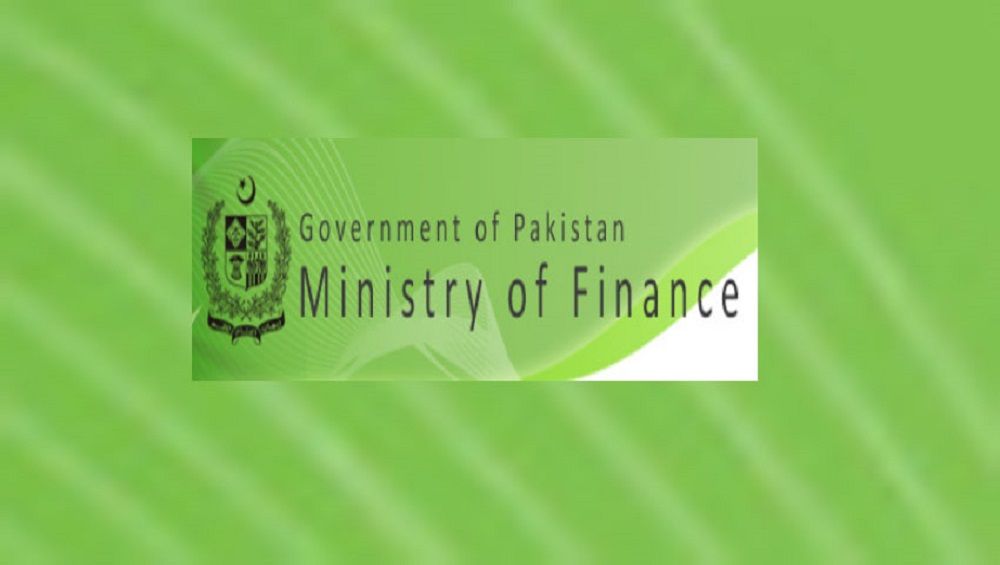GOP Introduces Comprehensive Set of Economic Reforms

Ministry of Finance has said that the gop macroeconomic adjustment and demand management policies for stabilization have started making an impact as visible in the moderate growth of 3.3 % in the FY2019 as well as introduction of a host of measures to bring down inflation, jack up economic activities, strengthening of social security net, increase in employment opportunities and containment of fiscal and trade deficits.
The result of what has been achieved so far needs to be seen and contextualised in the backdrop of a very difficult situation of the economy inherited by the government and how the measures taken by the government during the last one year have not only effectively checked the economic slide but turn the wheel in various sectors of the economy to ensure their long-term fruits for businesses and the common man.
GOP Introduces Comprehensive Set of Economic Reforms
In a detailed statement, the Finance Division has rejected the news reports published on the basis of a news article in an online international newspaper and claiming that the “Voters, traders feeling pain of the government’s economic plan” due to what the report suggests as rising inflation and other reasons.
The Finance Division has maintained that at the very outset, it is important to mention that when the present government assumed the office, the economy was facing multiple challenges relating to fiscal, external and real sector of the economy. The unaddressed macroeconomic imbalances and long awaited structural reforms needed urgent policy actions. To address these issues, the present government thus introduced a comprehensive set of economic and structural reforms and the impact of macroeconomic adjustment and demand management policies for stabilization were now visible as FY2019 witnessed moderate growth of 3.3 percent.
The Finance Division pointed out that the media reports while referring to increase in prices did not take into consideration the major causes behind this rise and instead stated the figures whereas major reasons for the rise in inflation are (i) sustained pressures on twin deficits which induced the government to adjust administered prices upwards and also impose regulatory duties on imported items; (ii) supply constraints of certain food items and imposition of FED on cigarettes; (iii) and the impact of rise in fuel prices and exchange rate depreciations.
The Finance Division has further stated that the rise in inflation was mainly due to delay in policy adjustments required during FY2018 as the present government had to make difficult decisions of upward adjustment in overdue gas and electricity prices, market-based exchange rate adjustments, increase in interest rates etc to correct the macroeconomic imbalances. The government also adopted prudent expenditure management and contractionary monetary policy to compress the aggregate demand. To this effect, the State Bank of Pakistan raised the policy rate to 13.25% to arrest inflationary pressures.
The Finance Division further clarified that the government was making all efforts to control inflation by ensuring a smooth supply of commodities, checking undue profiteering & hoarding and vigilant monitoring of prices both at the federal and provincial levels. To address the issue of severe macroeconomic instability and to put the economy on the path of sustained growth and stability, some tough immediate steps were required. The present government thus introduced a comprehensive set of economic and structural reforms. In this regard, the Finance Division has worked out a strategy to control inflationary pressures in the economy.
Explaining the measures to control inflationary pressures on the economy, the Finance Division said the government had discontinued borrowing from the State Bank of Pakistan which had an inflationary impact, and switched to commercial banks for borrowing which was less inflationary in nature. Similarly, National Price Monitoring Committee (NPMC) in consultation with the provinces was regularly monitoring the prices and supply of essential food and non-food items.
The Finance Division further noted that on the expenditures side, the government was following austerity measures with complete restriction on supplementary grants. This is helping to control the aggregate demand to ease out the inflationary pressure in the country. The government is also committed to imposing the burden of adjustments in energy prices on those who can afford rather than the poor segments of the society. A subsidy of Rs. 226.5 billion had been allocated in the budget for customers who use less than 300 units of electricity in a month (comprises 75% of total electricity consumers).
The Finance Division also referred to the ECC of the Cabinet’s decision to provide relief to the ‘Roti Tandoors’ for provision of cheap roti to the common man by giving the subsidy of Rs.1.5 billion. Similarly, the federal and provincial governments are ensuring smooth supply of essential items at affordable prices by organising the more sasta bazaars as well as in the open markets.
The Finance Division also mentioned that social protection through poverty alleviation programs had been introduced to protect the poor as the cost of structural reforms would fall disproportionately on the vulnerable segments of the society. Under Poverty Alleviation Division, the government has allocated an additional amount of Rs.80 billion in the country’s social protection spending for 2019-20 with a total allocation of Rs 1 protect 90 billion for the Social Safety Net Programme.
To improve socio-economic condition of the common man and to boost agriculture sector, the Federal government is implementing “National Agriculture Emergency Programme” and has approved 13 mega projects at the cost of Rs 287 billion. The programme is being executed with the coordination of all provinces aimed at boosting crops yield, fisheries and livestock development as well as water conservation.
To facilitate Industrial Sector, the government was providing a series of targeted subsidies and incentives to industrial sector. These include subsidies to industry for electricity and gas, export development package and continue to provide Long-Term Trade Financing (LTFF) and Export Refinancing Scheme (ERS) at subsidized rate.
During July-September FY2020, exports increased by 2.4 percent to US $ 6.033 billion against $ 5.893 billion in last year. Imports decreased by 22.7 percent during July-September FY2020, to US $ 11.032 billion against US $ 14.275 billion in last year. As a result, the trade deficit had shrunk to 34.85 percent to US $ 5.727 billion.
With regard to the reports on employment creation, the Finance Division said that it was important to highlight that Job creation was one of the key objective of government economic reform program and the government was evaluating specific proposals for job creation with strong participation by the private sector. The important initiatives include ‘Naya Pakistan Housing Program’ which is envisaged to construct 5 million homes over the next five years. With its strong backward linkages, development of housing sector will also lead to significant increase in growth of at least 40 different industries.
Similarly, the ‘Kamyab Jawan Program’ launched recently had two tiers program whereby tier 1 ranged from 0.1 million to 0.5 million while tier 2 ranged from 0.5 million to 5.0 million. Loans for tier 1 made available at a subsidized rate of 6% while for tier 2 rate is 8%. 110,000 loans will be disbursed under tier 1 and 29,000 loans will be disbursed under tier 2 over a 5-year period with subsidy of Rs 15 billion.
The Finance Division also reminded that the government had allocated Rs 5 billion for Prime Minister’s Youth skill Development in the budget 2019-20 while the government had set a target to create 100,000 jobs in IT in 2019 with the PSDP earmarked for ICT sector for 2019-20 at Rs.11,140 million, showing an increase of 52.6 percent over the corresponding period of last year.
The Finance Division further noted that investments in tourism had the potential to generate over half a million new direct and induced jobs over the next five years. To increase the number of tourist, the government had introduced an open Online Visa System for the citizens from 50 Countries. The government had allocated Rs 2 billion for Clean Green Pakistan Movement/ Tourism in budget 2019-20.
The Finance Division also said that the 10 Billion Tree Tsunami would create a total of 2 million jobs over the life of the project. Similarly, during calendar year 2018, 3, 82439 people were registered for overseas employment while from Jan-August 2019, 373,225 Pakistanis were registered by Bureau of Emigration and Overseas Employment for employment as compared to 244,504 emigrants during the corresponding period last year.
The Finance Division also noted that in the current budget, government had protected the vulnerable segments from utility price increases. The government had also protected the low-gas consumers from high gas price. Similarly, to keep the Roti prices at the lower level, the government had been providing subsidy of Rs 1.5 billion to the Roti Tandoors. GST on LPG had been reduced from 17% to 10% while low electricity consumers were also being protected from full impact of price increase.
The Finance Division also reminded that the ease of doing business was also improving at the fast pace, as in 06 indicators out of 10, there was significant improvement in Pakistan and the World Bank had placed Pakistan in top 20 best performers in ease of doing business. Pakistan follows liberal investment regime for investors’ confidence and conducive environment to attract local and foreign investment. During September FY 2020, the FDI recorded at US $ 385.3 million showing an increase of 75.6 percent as against US $ 182.1 million during the same month last year.
PTA Taxes Portal
Find PTA Taxes on All Phones on a Single Page using the PhoneWorld PTA Taxes Portal
Explore NowFollow us on Google News!





